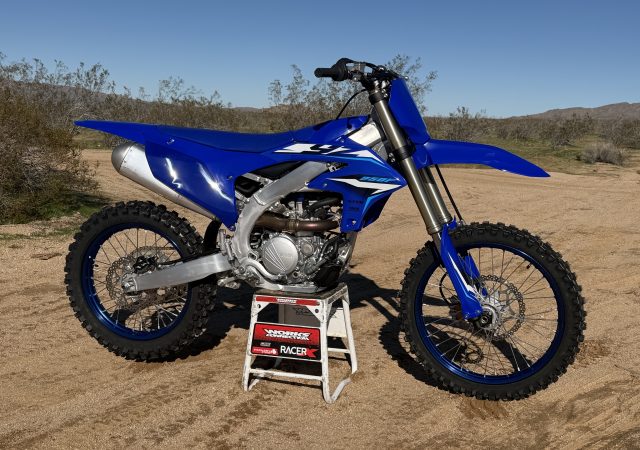
For this edition of Classic Steel, we are going to look back at Yamaha’s revamped 1999 YZ250.
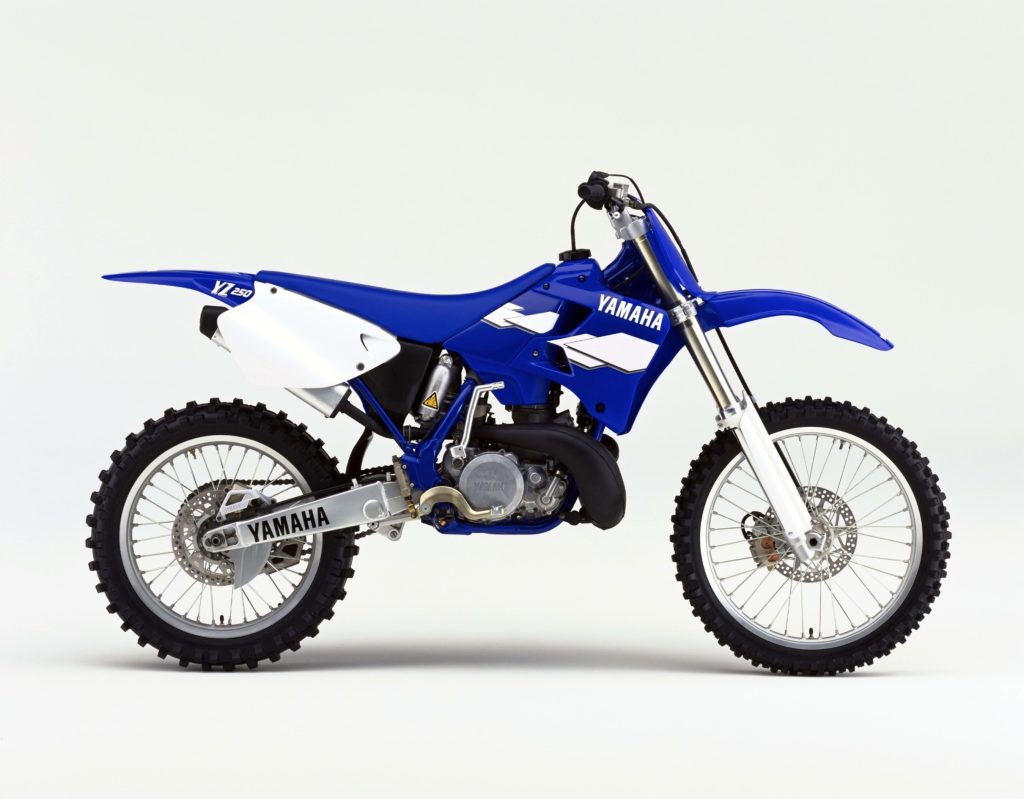 At first glance the 1999 YZ250 looked little changed from the year before but underneath those Bold New Graphics beat the heart of a winner. Photo Credit: Yamaha
At first glance the 1999 YZ250 looked little changed from the year before but underneath those Bold New Graphics beat the heart of a winner. Photo Credit: Yamaha
The 1998 season was a big one for Yamaha. Jeremy McGrath brought the brand its first 250 Supercross title since 1980, John Dowd secured Yamaha a third straight 125-West Coast SX crown, and Doug Henry captured the 250 National Motocross title on the all-new YZ400F four-stroke. The Blu Cru dominated racing in 1998 with an excellent lineup of machines that delivered race-winning performance.
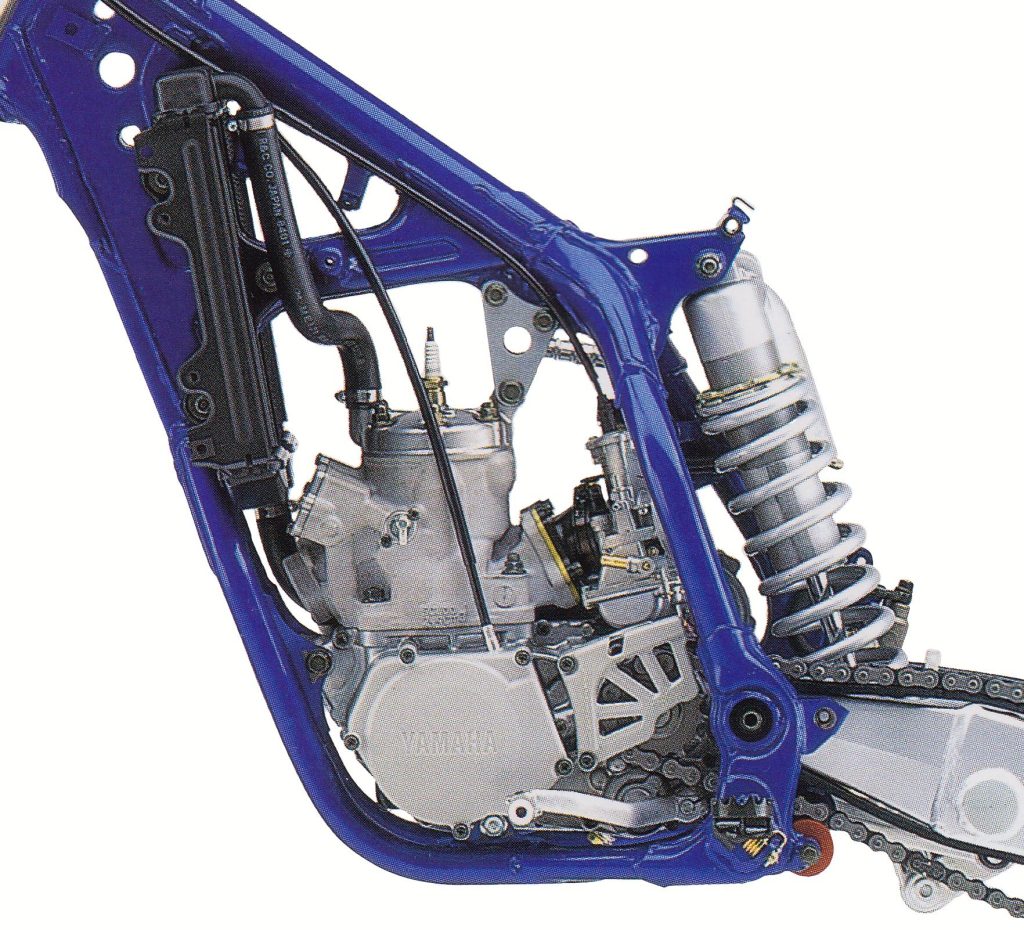 By far the most significant update on the YZ250 for 1999 was its all-new 249cc motor. Everything from the bore and stroke to the power valve design was all-new and engineered to bring the underpowered YZ up to snuff with its rivals. Photo Credit: Yamaha
By far the most significant update on the YZ250 for 1999 was its all-new 249cc motor. Everything from the bore and stroke to the power valve design was all-new and engineered to bring the underpowered YZ up to snuff with its rivals. Photo Credit: Yamaha
In the magazines, Yamaha’s 1998 YZ400F and YZ125 were the darlings of their respective classes. The revolutionary YZ-F four-stroke broke new ground for Open class performance and the venerable YZ125 continued its dominance of the 125 division with its unbeatable combination of broad power and blistering acceleration. In the 250 class, however, the YZ’s fortunes were less extraordinary. Revamped in 1996, Yamaha’s deuce-and-a-half was competitive, but not a standout against its rivals. With a motor that could trace its roots back to the 1980s, Yamaha’s YZ250 was easy to ride but not particularly thrilling. It lacked the “right now” burst of Kawasaki’s KX250 and the “rev it to the moon” top-end pull of Honda’s CR250R. Its power was broad and pleasant, its suspension was well sorted, and its handling was middle of the road. It was a great do-it-all bike for riders who prized overall competence and ease of use over tire-shredding performance.
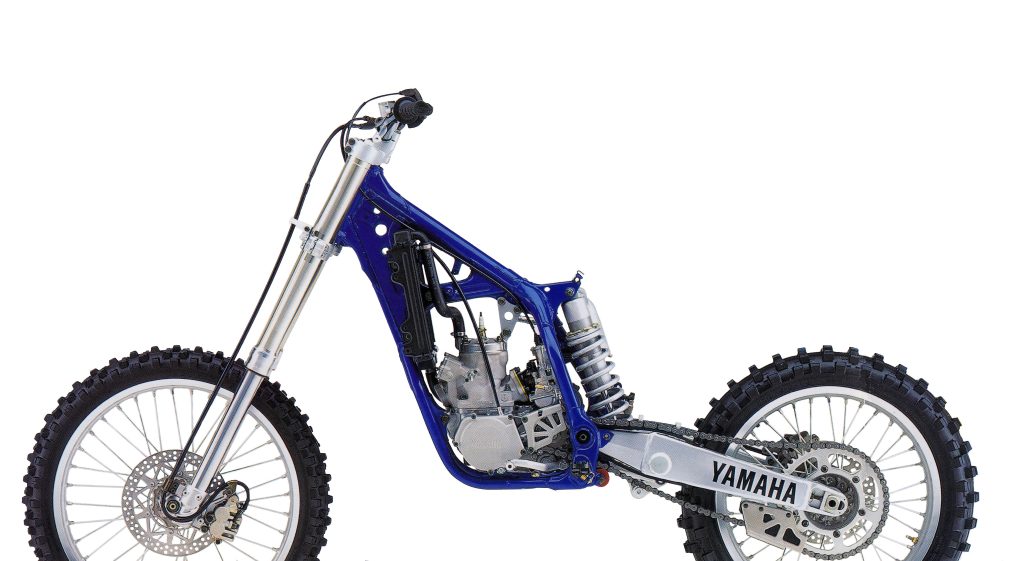 Aside from changes required to accommodate the new motor the YZ’s frame was unchanged from the year before. The Why-Zed was already regarded as one of the best-handling machines in the class and Yamaha chose to maintain the same geometry for 1999. Photo Credit: Yamaha
Aside from changes required to accommodate the new motor the YZ’s frame was unchanged from the year before. The Why-Zed was already regarded as one of the best-handling machines in the class and Yamaha chose to maintain the same geometry for 1999. Photo Credit: Yamaha
In 1999, Yamaha looked to bring a bit of pizzazz to their quarter-liter racer by introducing their first all-new 250 motor design in nearly two decades. Since 1982, Yamaha had relied on a rotating-drum power valve variable exhaust design they coined the YPVS (Yamaha Power Valve System). The YPVS was groundbreaking in 1982 and the first variable exhaust port design to make it to production. Eventually, however, more advanced dual and triple valve designs were introduced that delivered broader power and more peak performance.
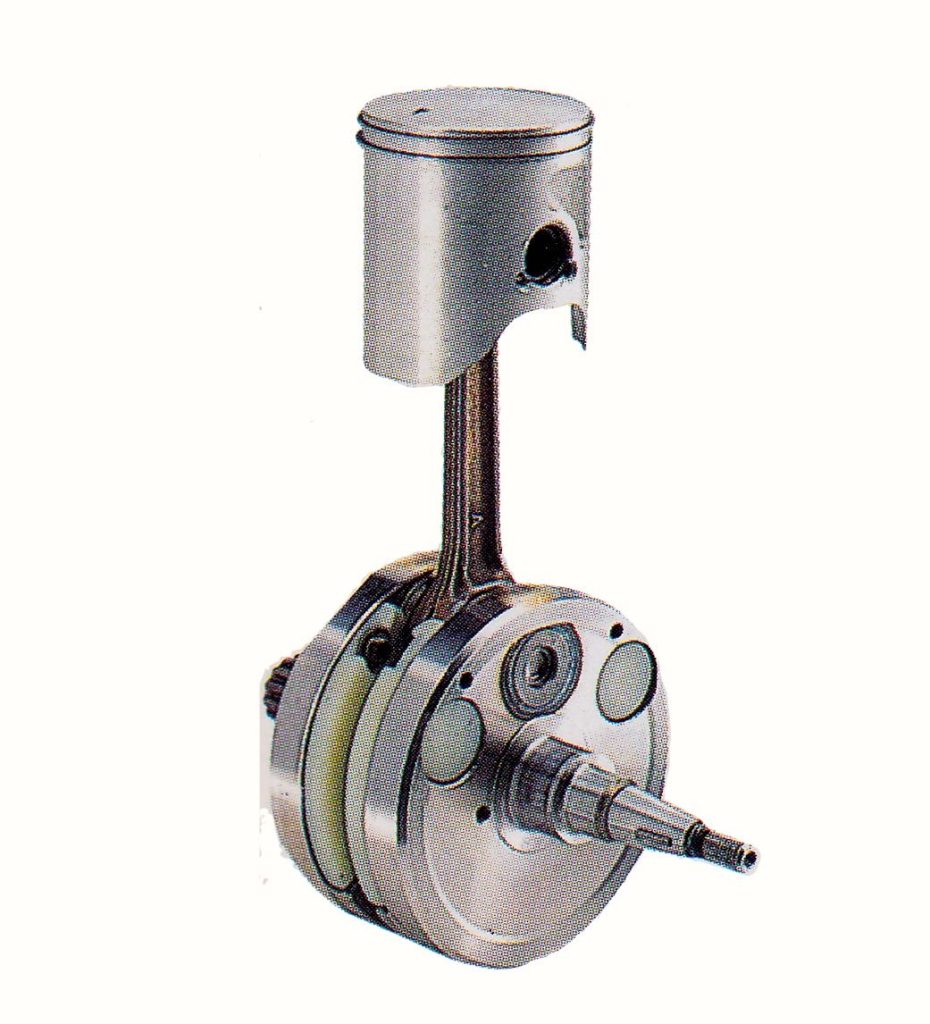 An all-new crank for 1999 was lighter and featured a longer stroke than in the past. The new piston was lighter and maintained a double-ring design for optimal sealing and longevity. Photo Credit: Yamaha
An all-new crank for 1999 was lighter and featured a longer stroke than in the past. The new piston was lighter and maintained a double-ring design for optimal sealing and longevity. Photo Credit: Yamaha
In 1995, Yamaha added an exhaust resonance chamber to the YPVS to broaden the YZ’s powerband, but it continued to lag behind powerhouses like the Honda CR250R in peak motor performance. The YZ250’s powerband was wide and easy to ride, but not as fast as some of its competition in stock condition. With its do-it-all handling and well-sorted suspension many riders still felt the YZ was an excellent machine, but the time for an all-new motor was quickly approaching.
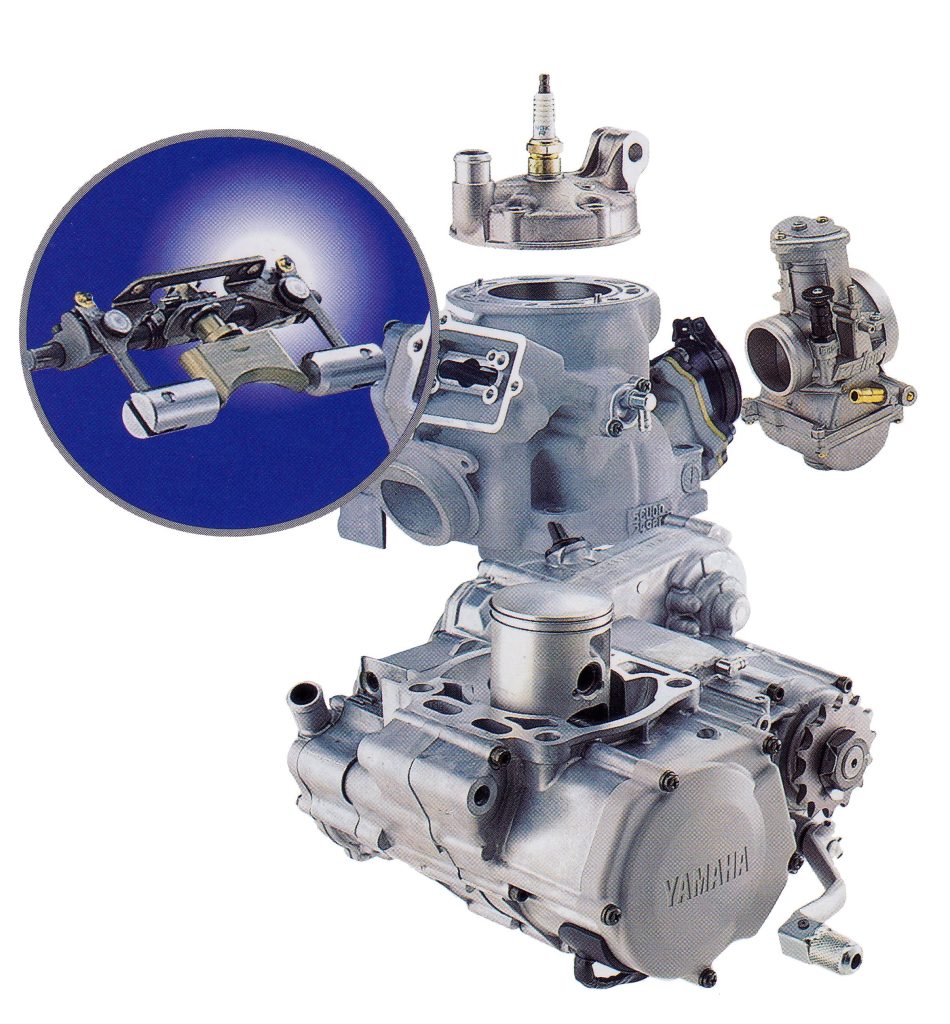 The YZ’s all-new motor finally did away with the rotating drum power valve design Yamaha had been using on their 250 machines since 1982. The new power valve design featured a single guillotine-style main valve and two smaller valves for the exhaust boost ports for more precise exhaust control. Photo Credit: Yamaha
The YZ’s all-new motor finally did away with the rotating drum power valve design Yamaha had been using on their 250 machines since 1982. The new power valve design featured a single guillotine-style main valve and two smaller valves for the exhaust boost ports for more precise exhaust control. Photo Credit: Yamaha
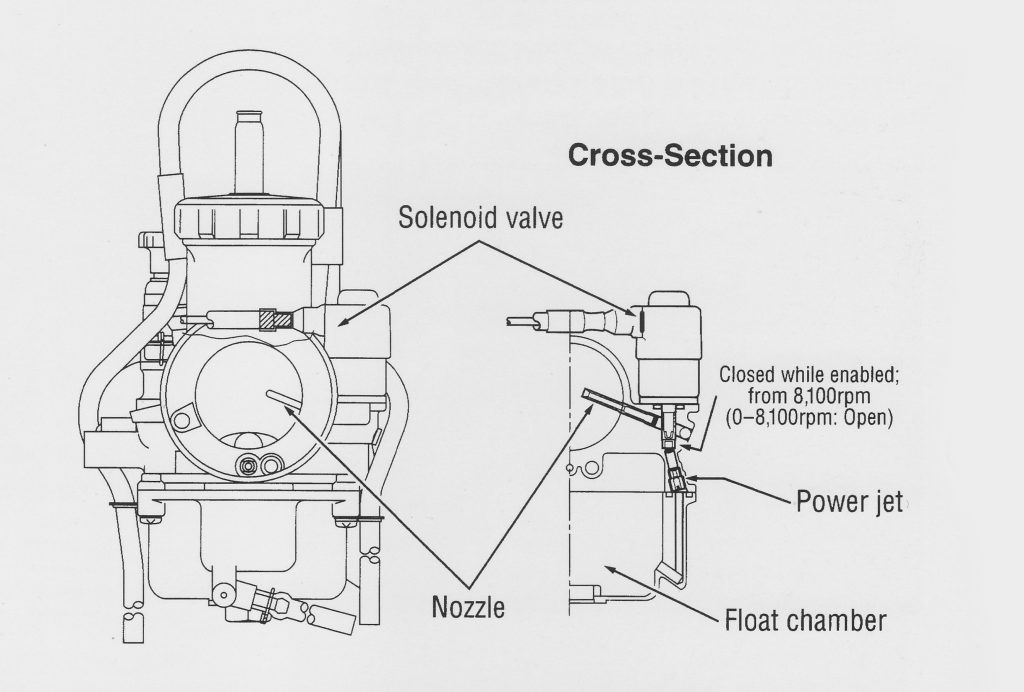 The ’99 YZ’s carburetor was all-new and featured a solenoid-controlled “Power Jet” that fed additional fuel to the motor below 8000 RPM to boost low-to-mid response.
The ’99 YZ’s carburetor was all-new and featured a solenoid-controlled “Power Jet” that fed additional fuel to the motor below 8000 RPM to boost low-to-mid response.
In 1996, Yamaha introduced an redesigned YZ250 that moved the machine forward in every way but one. All-new from the ground up, the 1996 YZ improved handling and ergonomics, and to most rider’s eyes, the appearance of Yamaha’s venerable YZ250 was improved by an all-new look. Updated bodywork introduced Yamaha’s new blue color pallet and offered a slimmer and sleeker profile. The new chassis was stiffer and more accurate with the YZ offering one of the best combinations of turning prowess and high-speed stability in the class.
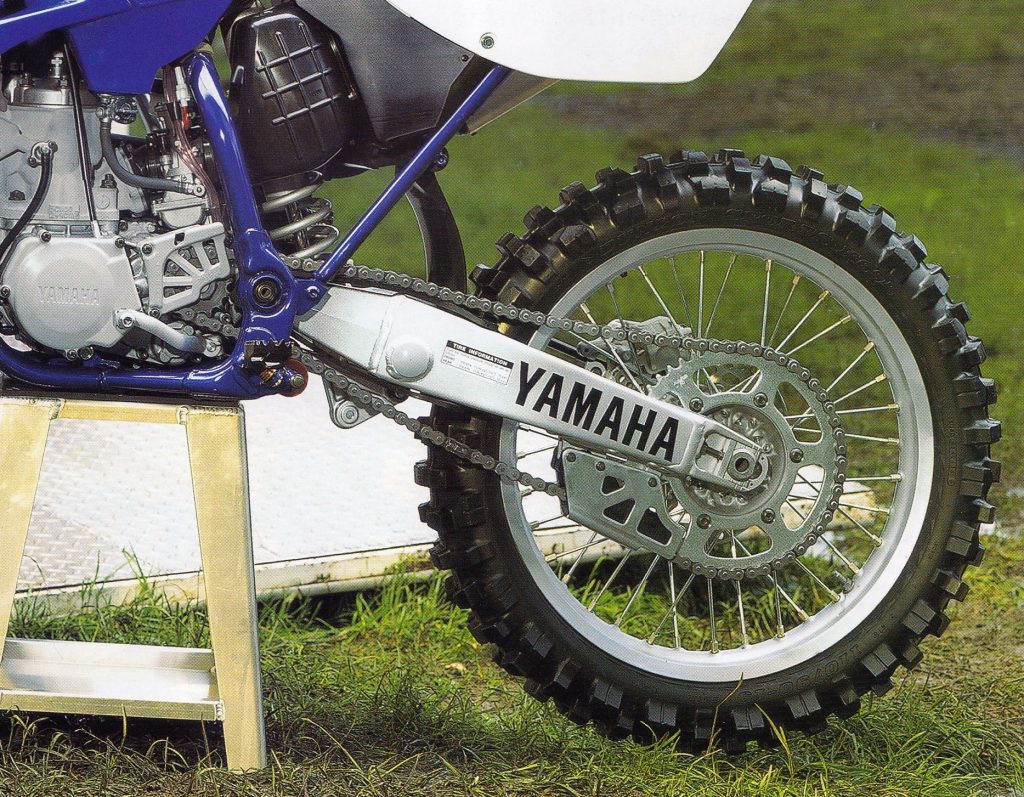 The most significant change to the YZ250’s chassis for 1999 was an all-new linkage and swingarm that repositioned the shock mount to be 12mm lower on the chassis and shaved half a pound on the scales. Photo Credit: Yamaha
The most significant change to the YZ250’s chassis for 1999 was an all-new linkage and swingarm that repositioned the shock mount to be 12mm lower on the chassis and shaved half a pound on the scales. Photo Credit: Yamaha
 In 1998, one of the biggest stories in motocross was Jeremy McGrath’s move to Yamaha after a disappointing season on Suzukis. Once on the blue machines, Showtime was quickly back to his old form and carded Yamaha its first Supercross title since Mike Bell in 1980. Photo credit: Yamaha
In 1998, one of the biggest stories in motocross was Jeremy McGrath’s move to Yamaha after a disappointing season on Suzukis. Once on the blue machines, Showtime was quickly back to his old form and carded Yamaha its first Supercross title since Mike Bell in 1980. Photo credit: Yamaha
Where things went astray for the new YZ was in the motor department. The YZ was underpowered compared to its competition and just not up to running with the best machines in the class. Changes made to the powerplant for 1996 narrowed its previously broad delivery and at its peak, it gave up nearly four horsepower to the class leaders. In many ways, the new blue YZ was an improvement, but without the firepower to run at the front, it slipped from one of the class leaders to the caboose of the 1996 250 field.
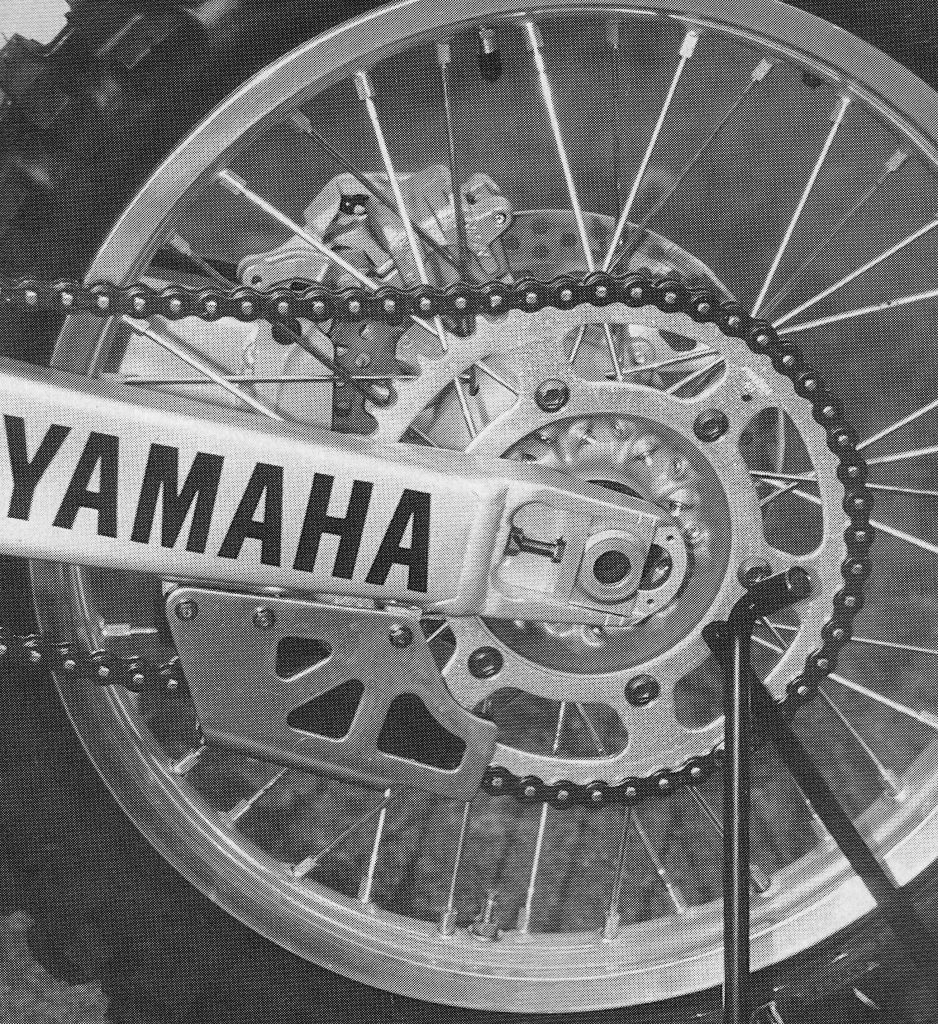 An all-new rear wheel for 1999 added Takasago Excel rims, larger spoke nipples, a redesigned sprocket mount, and a 2mm larger rear axle. Photo Credit: Motocross Action
An all-new rear wheel for 1999 added Takasago Excel rims, larger spoke nipples, a redesigned sprocket mount, and a 2mm larger rear axle. Photo Credit: Motocross Action
In 1997 and 1998, Yamaha refined the YZ250 package with motor, chassis, and suspension updates that improved its competitiveness. The engineers rolled back the changes made to the motor in 1996 and that resulted in a much broader but still not blisteringly fast power plant. The wide powerband was easy to ride and excellent for less-skilled riders but its continued lack of holeshot-grabbing horsepower held it back in the final standings. Most riders liked the YZ’s versatile chassis and well-sorted suspension but without more horses on tap, it was never going to outclass powerhouses like Kawasaki’s excellent KX250.
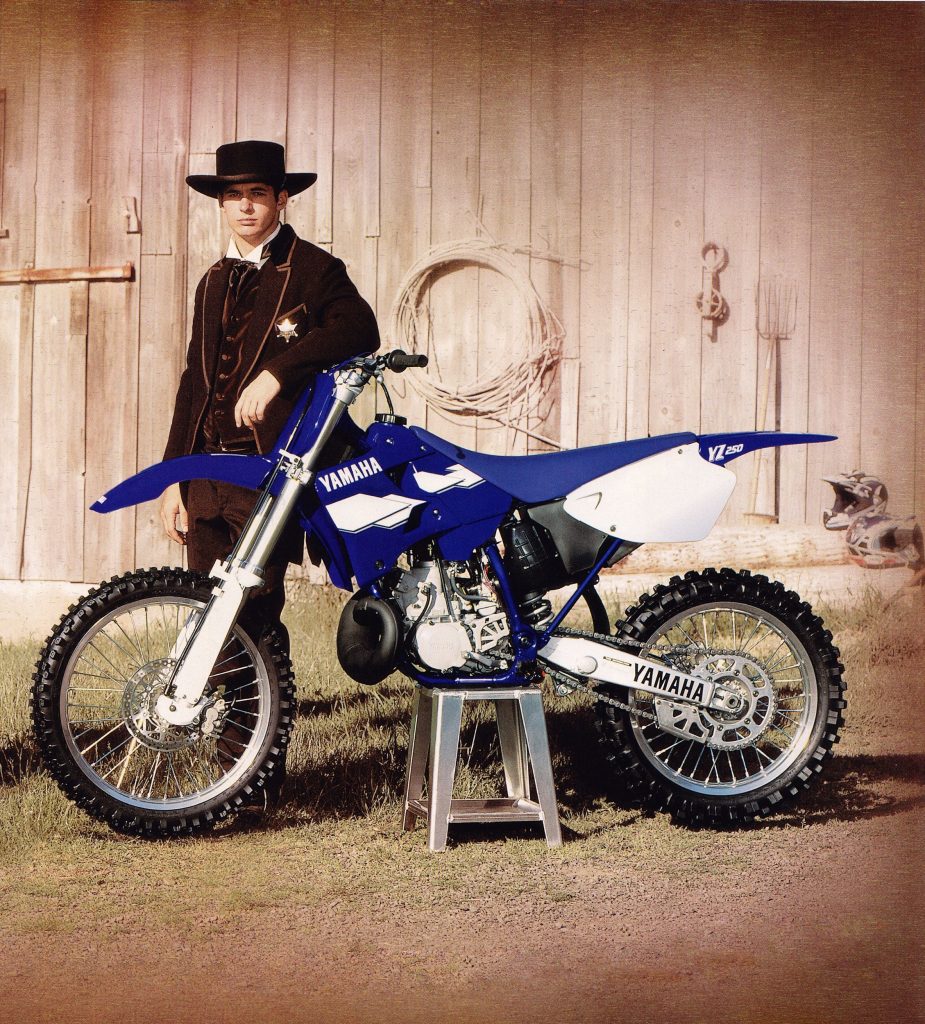 Hired Gun: One of the more interesting controversies of the 1999 season was Kevin Windham’s surprising departure from Yamaha to Honda. Originally set to be under contract for the ’99 season, Windham appeared prominently in Yamaha’s advertising for the new YZs then abruptly left the brand (reportedly over disputes with management regarding the presence of his girlfriend in the team semi) to sign a 2-year deal with Honda. Yamaha sued Windham for Breach of Contract looking to recoup the cost of the glossy and costly seven-page ad. Eventually, the two parties settled out of court for an undisclosed amount. Photo Credit: Yamaha
Hired Gun: One of the more interesting controversies of the 1999 season was Kevin Windham’s surprising departure from Yamaha to Honda. Originally set to be under contract for the ’99 season, Windham appeared prominently in Yamaha’s advertising for the new YZs then abruptly left the brand (reportedly over disputes with management regarding the presence of his girlfriend in the team semi) to sign a 2-year deal with Honda. Yamaha sued Windham for Breach of Contract looking to recoup the cost of the glossy and costly seven-page ad. Eventually, the two parties settled out of court for an undisclosed amount. Photo Credit: Yamaha
For 1999, Yamaha’s engineers finally got the green light to scrap their well-worn motor design and start fresh with an all-new engine. The new motor was redesigned from the ground up with everything from the placement of the crankshaft to the angle of the cylinder rethought to optimize performance. The crankshaft was repositioned to sit 13mm lower in the cases while also being larger in diameter and lighter overall. The connecting rod was redesigned with a smaller diameter lower bearing and thinner construction to save weight. The piston was all-new and lighter with a shorter wrist pin and slightly smaller diameter. The new motor reconfigured the bore and stroke from the old motor’s 68mm x 68.8mm to the same 66.4mm x 72mm employed on Honda’s CR250R. The top-end was all-new with a smaller diameter head, an all-new power valve system, and a more vertically arranged placement. The old cylinder cantered forward at 10.7 degrees while the new ’99 design sat at a nearly vertical 2.5 degrees. The new cylinder retired the original Yamaha Power Valve System design in use since 1982 and introduced an all-new triple-valve design that featured a guillotine-style main valve with two additional valves to control the exhaust boost ports. The ball-ramp governor that controlled the power valve was redesigned by increasing the size of the balls and reshaping the cup for more precise control of the mechanism.
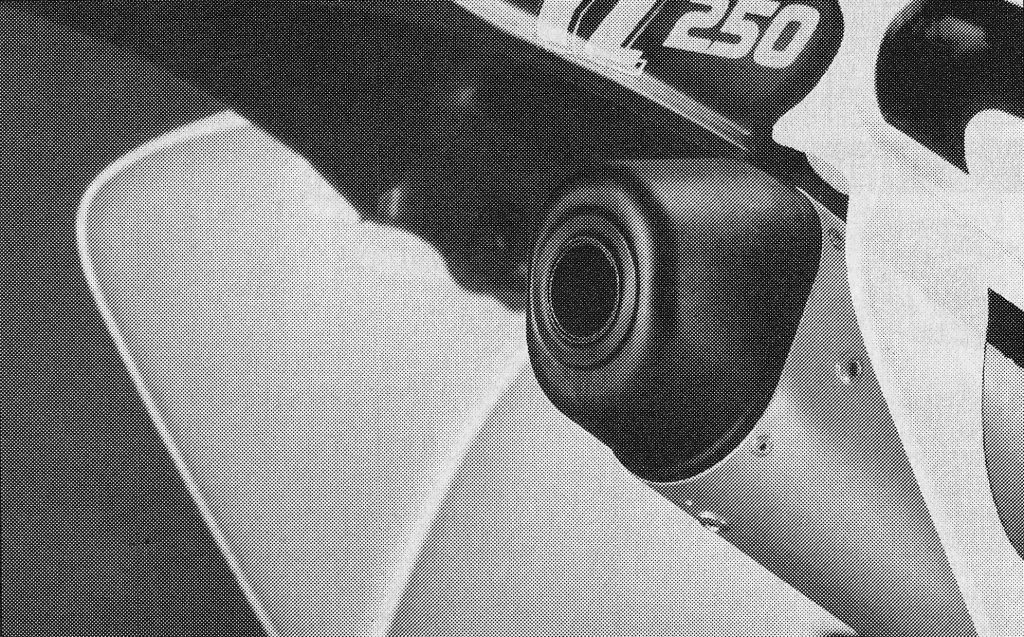 An all-new silencer for 1999 added an enclosed resin end cap that Yamaha claimed was less likely to pack with dirt in the event of a crash. Photo Credit: Motocross Action
An all-new silencer for 1999 added an enclosed resin end cap that Yamaha claimed was less likely to pack with dirt in the event of a crash. Photo Credit: Motocross Action
In 1998, one of the pleasant surprises on the all-new YZ400F four-stroke was the silky-smooth operation of its transmission. Long a Yamaha bugaboo, notchy gear engagement had been a YZ tradition for over two decades. For 1999, the YZ250 adopted the 400F’s transmission design with larger shafts and redesigned shift forks that were pinned to the shift shafts. The transmission remained a five-speed with ratios identical to the 1997 YZ250. The clutch remained largely unchanged, but the actuator was repositioned inside the ignition cover and a new O-ring seal replaced the old gasket on the clutch cover to ease maintenance. The clutch cable was reduced in diameter by 0.5mm to improve feel and reduce weight. The oil filler hole was enlarged to make oil changes easier.
 An all-new shock for 1999 featured increased travel, new valving, and enlarged nitrogen volume to fight fading. Photo Credit: Yamaha
An all-new shock for 1999 featured increased travel, new valving, and enlarged nitrogen volume to fight fading. Photo Credit: Yamaha
On the intake side, an all-new 38mm Keihin carburetor was installed that added a “Power Jet” circuit for increased response at low RPM. First introduced by Honda on the 1997 CR250R, the Power Jet was an additional fuel circuit in the carburetor that was controlled by a solenoid that enriched the fuel mixture at low RPM. At 8500 RPM, the solenoid cut off fuel to this additional circuit to prevent the motor from running too rich and reducing performance at high RPM.
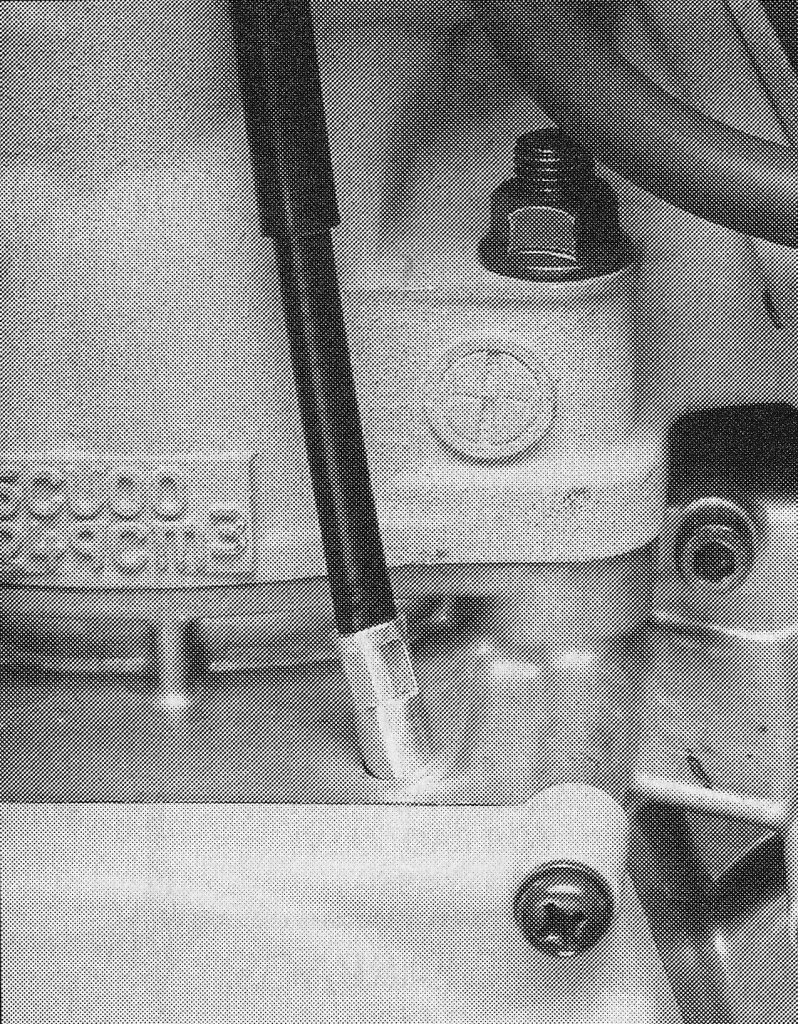 All-new cases for 1999 moved the clutch mechanism to a Honda-like internal location inside the ignition cover. Photo Credit: Motocross Action
All-new cases for 1999 moved the clutch mechanism to a Honda-like internal location inside the ignition cover. Photo Credit: Motocross Action
Powering the Power Jet was an all-new electronic ignition that featured 3-D mapping and a revamped 8-bit CPU (the 1998 YZ250 used a 4-bit CPU) for more precise ignition control. Exhaust duties were handled by an all-new pipe with thinner stampings to reduce weight and a redesigned profile to improve power. A new silencer added a flush resin end cap to reduce the chance of the stinger packing with dirt or causing an injury in a crash.
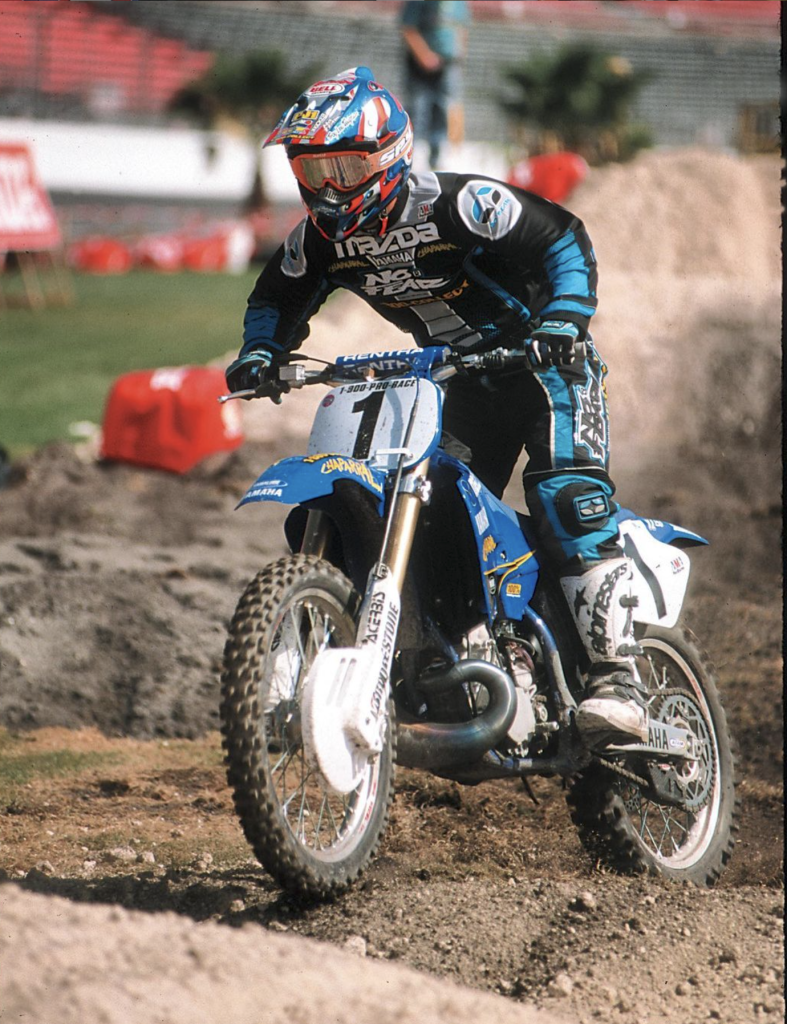 Jeremy Mcgrath was once again back to his winning ways in 1999 on the revamped YZ250. He would capture eight victories on his Mazda Chaparral Yamaha on his way to the 1999 AMA 250 Supercross title. Photo Credit: Dirt Bike
Jeremy Mcgrath was once again back to his winning ways in 1999 on the revamped YZ250. He would capture eight victories on his Mazda Chaparral Yamaha on his way to the 1999 AMA 250 Supercross title. Photo Credit: Dirt Bike
On the chassis front, the YZ was new but not as radically updated. The new frame featured several changes needed to accommodate the new motor, but the overall geometry was very similar to 1998. The biggest change to the chassis was the all-new swingarm which was a half-pound lighter than in 1998 and featured all-new castings and a repositioned lower shock mount. The axle plates were redesigned as well and manufactured to accept a 2mm larger rear axle for 1999. A new linkage for ’99 retained the same rising rate as 1998 but featured a mechanical advantage over the old design by repositioning the angle and placement of the shock mounting. Aside from the new swingarm and linkage, the most significant frame change was the new footpeg bracket that relocated the footpegs 3.5mm closer the frame and reduced weight slightly.
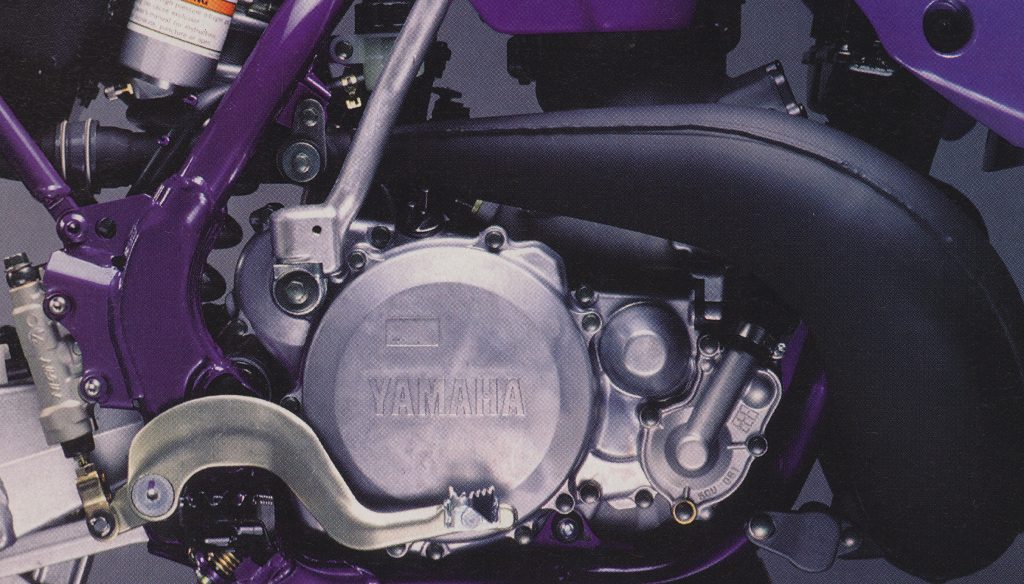 Redesigned cases for 1999 made servicing easier by enlarging the oil fill hole considerably and moving from a gasket to a reusable O-ring for the clutch cover. Photo Credit: Yamaha
Redesigned cases for 1999 made servicing easier by enlarging the oil fill hole considerably and moving from a gasket to a reusable O-ring for the clutch cover. Photo Credit: Yamaha
Paired with the new linkage was an updated Kayaba shock with 15mm of additional travel, increased gas capacity, and updated valving. The additional gas capacity was designed to reduce fading and the extended travel and relocated linkage were employed to provide smoother performance under braking. The revised valving was set up to offer freer movement of the shock at slow speeds while providing greater resistance to bottoming on hard hits. Total travel clocked in at 12.4” with external adjustments available for compression and rebound damping.
 New forks for 1999 featured stronger outer tubes and revamped valving. While their initial travel was plush, most hard chargers found their stock springs and valving too soft for serious motocross use. Photo Credit: Yamaha
New forks for 1999 featured stronger outer tubes and revamped valving. While their initial travel was plush, most hard chargers found their stock springs and valving too soft for serious motocross use. Photo Credit: Yamaha
Up front, the 1999 YZ250 employed a substantially revised KYB fork with stronger outer tubes and reduced friction in the piston, seals, and bushing areas. The new silverware maintained the “bumper-style” design for the bottoming system but added updated valving with additional high-speed compression damping and a revised blow-off valve. To further save weight the outer tubes were tapered and the nut on top of the cartridge valve was changed to aluminum.
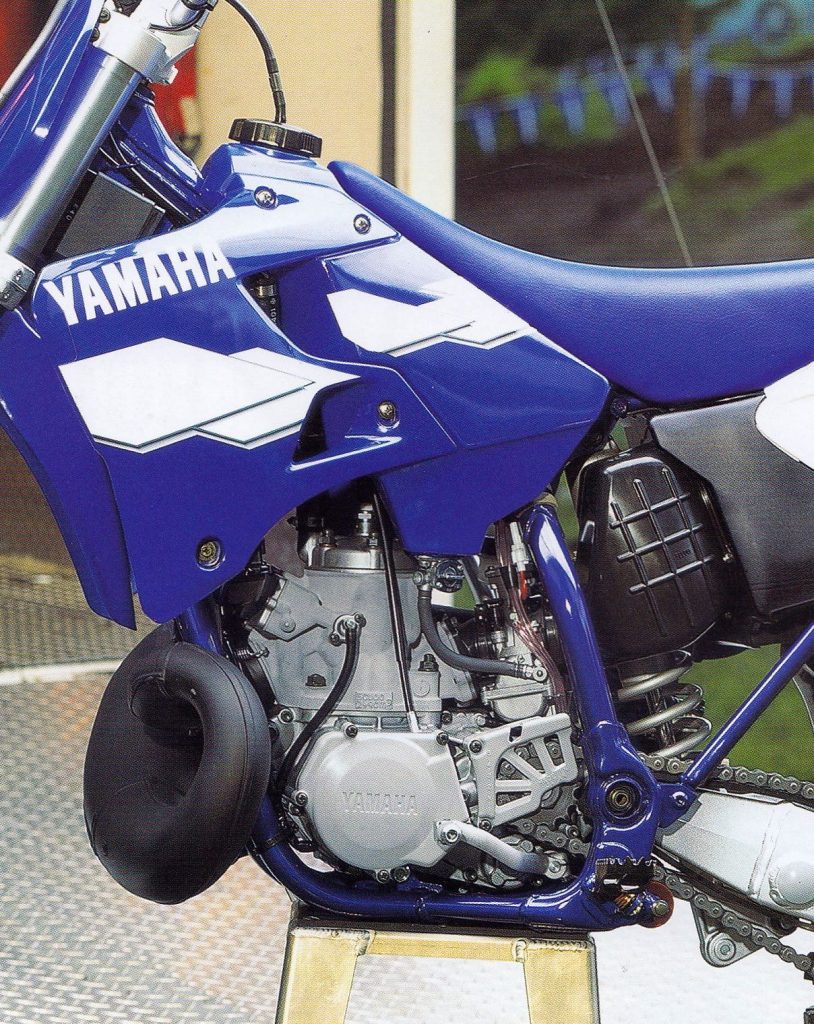 By far the biggest improvement on the YZ250 for 1999 was its all-new motor. Smooth, snappy, powerful, and broad, it was a huge improvement over the mellow YZ powerplants of the previous three years. Photo Credit: Yamaha
By far the biggest improvement on the YZ250 for 1999 was its all-new motor. Smooth, snappy, powerful, and broad, it was a huge improvement over the mellow YZ powerplants of the previous three years. Photo Credit: Yamaha
Bodywork remained unchanged from 1998 except for the handsome new “works” graphics that mimicked the designs seen on the 1998 factory Yamaha machines. The bars, seat, and brakes were all carryovers. New wheels front and rear added Takasago Excel rims, a 2mm larger axle in the rear, 1mm larger spoke nipples, and lighter weight hubs. All told, Yamaha’s weight-saving measures for 1999 added up to a 2-pound reduction in weight.
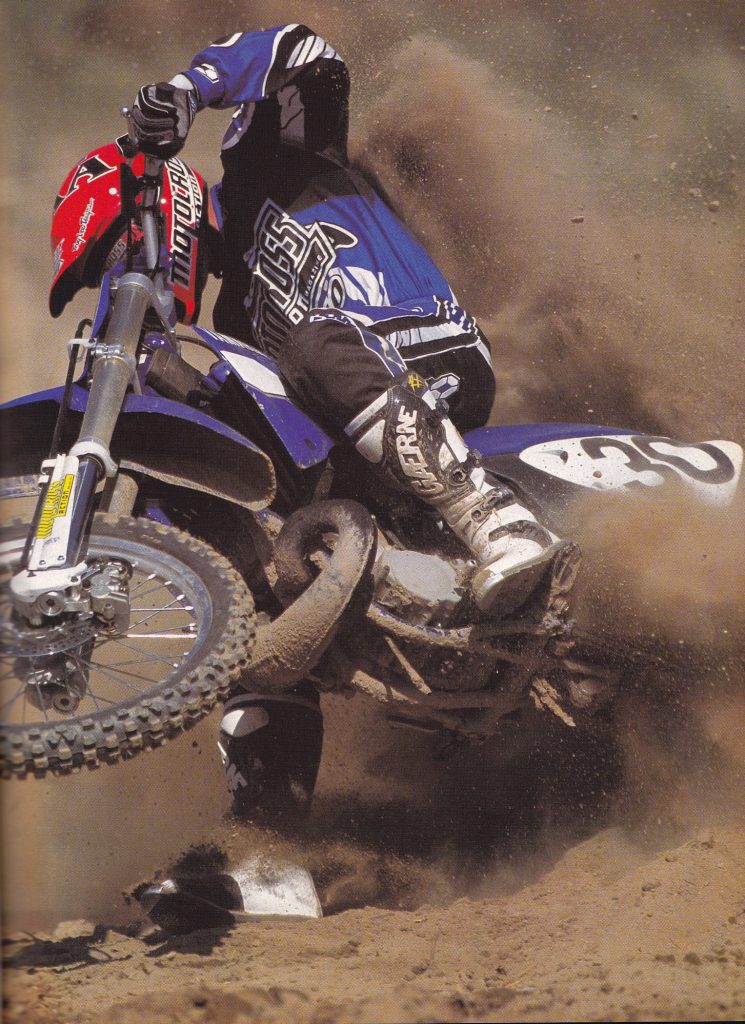 After three years of sucking on the red, yellow, orange, and green vapor trails of the competition, the YZ was back in the horsepower sweepstakes in 1999. Photo Credit: Motocross Action
After three years of sucking on the red, yellow, orange, and green vapor trails of the competition, the YZ was back in the horsepower sweepstakes in 1999. Photo Credit: Motocross Action
On the track, the revamped YZ250 proved to be one of the best 250s of 1999. The new motor was head-and-shoulders better than the 1998 power plant with an incredibly wide powerband and hooked-up delivery. Throttle response was excellent with a much livelier feel than in the past. The new motor picked up fast and revved more quickly while never feeling abrupt or difficult to control. The low-end power was not as strong as the burly KX and the midrange hit was less abrupt than the shoulder-tugging CR, but no other bike in the class offered the Yamaha’s combination of outright power and ease of use. It retained the smooth delivery of 1998 while pumping up the power significantly. Low-to-mid power was substantially improved with a strong surge off idle and a healthy midrange hit. The top-end pull was good, but the YZ was happier if you grabbed the next gear rather than keeping it pinned until the cows came home. Grabbing that next gear was also much easier than in the past due to the YZ400F-style transmission. For the first time in the YZ’s history, a Yamaha 250 offered the smoothest and most positive shifting in the class. Missed shifts were unheard of and shifting under power was no longer a hit-or-miss affair. The Yamaha’s clutch remained vaguer in its engagement than the excellent Honda unit, but overall, the YZ’s motor proved one of the best available in 1999.
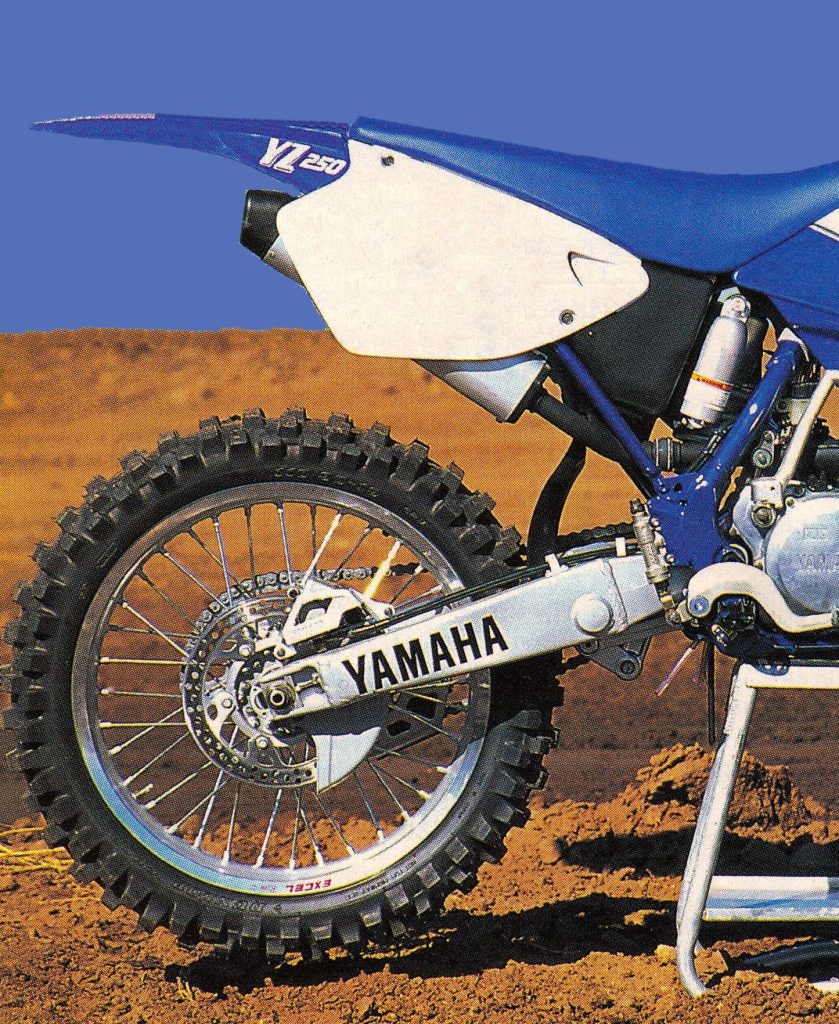 The all-new shock on the YZ250 offered a plush and controlled ride that was better sorted than the undersprung and underdamped front forks. Most riders felt the shock was raceable in stock condition with only minor fine-tuning of the clickers. Photo Credit: MX Racer
The all-new shock on the YZ250 offered a plush and controlled ride that was better sorted than the undersprung and underdamped front forks. Most riders felt the shock was raceable in stock condition with only minor fine-tuning of the clickers. Photo Credit: MX Racer
On the handling front, the YZ once again nailed the best combination of handling precision and high-speed stability in the class. The YZ’s turning was excellent with manners that several riders ranked at the top of the 250 division. The front end stuck like glue in the turns and the YZ was predictable in high and slow-speed corners. At speed, the YZ was rock solid as well with the blue machine rarely exhibiting a shake or wobble. At 228 pounds, the YZ gave up 6 pounds to the CR, but the Yamaha’s more compact chassis and snappy motor made it feel lighter than the scale indicated. In the air and on the ground, the YZ exhibited a nimble feel that made it easy to hop over bumps and clear tricky jumps. The YZ’s compact ergonomics made it a bit cramped for NBA types, but for most riders, the YZ offered one of the best-handling chassis in the class.
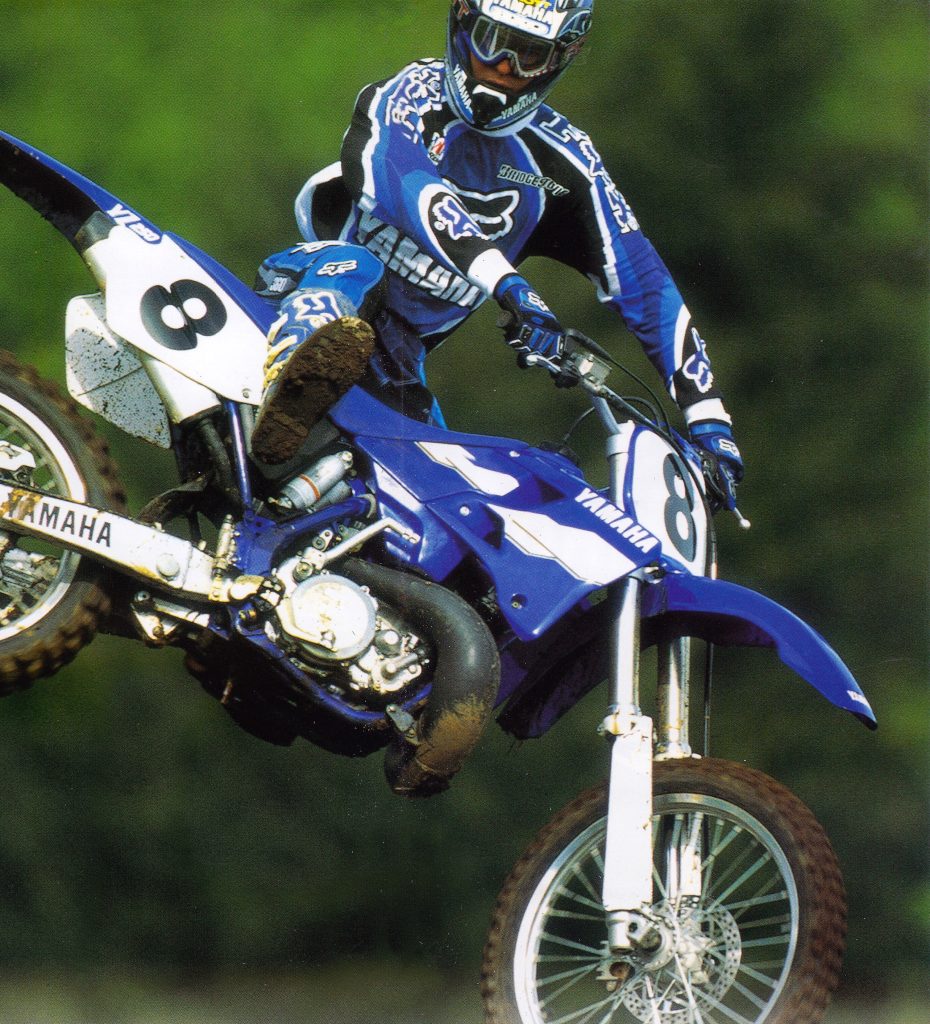 At 228 pounds the YZ was far from the lightest bike in the class, but its excellent ergonomics and snappy motor made it feel like one of the lightest. Whips and jumps were a joy on the YZ once the soft front forks were addressed. Photo Credit: Yamaha
At 228 pounds the YZ was far from the lightest bike in the class, but its excellent ergonomics and snappy motor made it feel like one of the lightest. Whips and jumps were a joy on the YZ once the soft front forks were addressed. Photo Credit: Yamaha
While the YZ’s chassis was universally praised, not everyone was in love with its updated suspension. The front forks offered a soft feel that less experienced riders enjoyed but experts found lacked control. Despite coming with relatively stiff .43kg/mm stock springs, most riders felt the forks needed stiffer coils to prevent bottoming and balance out the chassis. In stock condition, the forks offered a cushy feel that was good at gobbling up track detritus but large whoops and big jumps quickly overwhelmed its stock settings. Slower riders loved this comfy feel but once the speeds ramped up their lack of control became apparent.
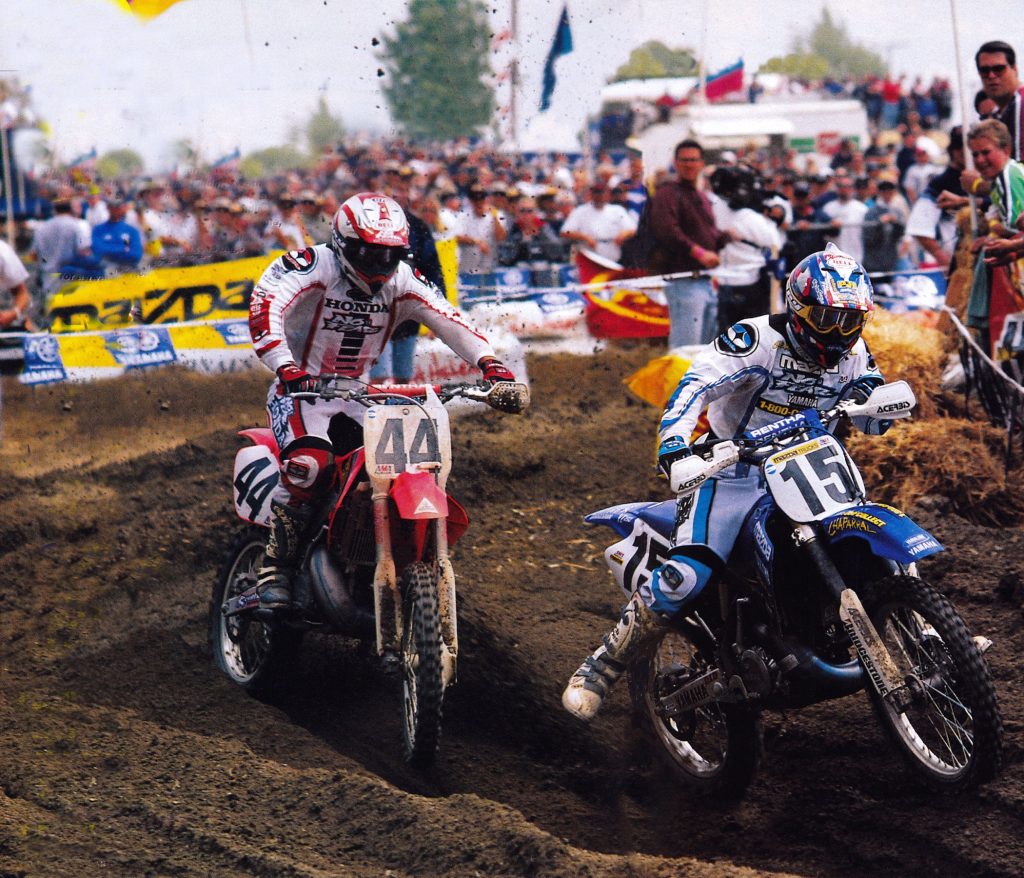 In 1999, Jeremy McGrath moved to a Supercross-only schedule that allowed him to take the summers off to recharge his batteries. While the Motocross series was no longer his focus McGrath still showed he had the speed to run at the front leading a good bit of the Glen Helen round before clutch issues slowed the 1995 250 Motocross champ. Photo Credit: Motocross Action
In 1999, Jeremy McGrath moved to a Supercross-only schedule that allowed him to take the summers off to recharge his batteries. While the Motocross series was no longer his focus McGrath still showed he had the speed to run at the front leading a good bit of the Glen Helen round before clutch issues slowed the 1995 250 Motocross champ. Photo Credit: Motocross Action
In the rear, the new shock was more universally praised for its plush feel and excellent tracking in the rough. It was noticeably firmer than the front forks while still offering excellent comfort and control. Big jumps and whoops were no issue and the YZ could handle novices and pros without too many complaints. In stock condition, the soft forks and stiffer shock hindered the YZ’s chassis balance, but once the front springs were upgraded and the clickers dialed in the YZ’s suspension was a willing motocross companion.
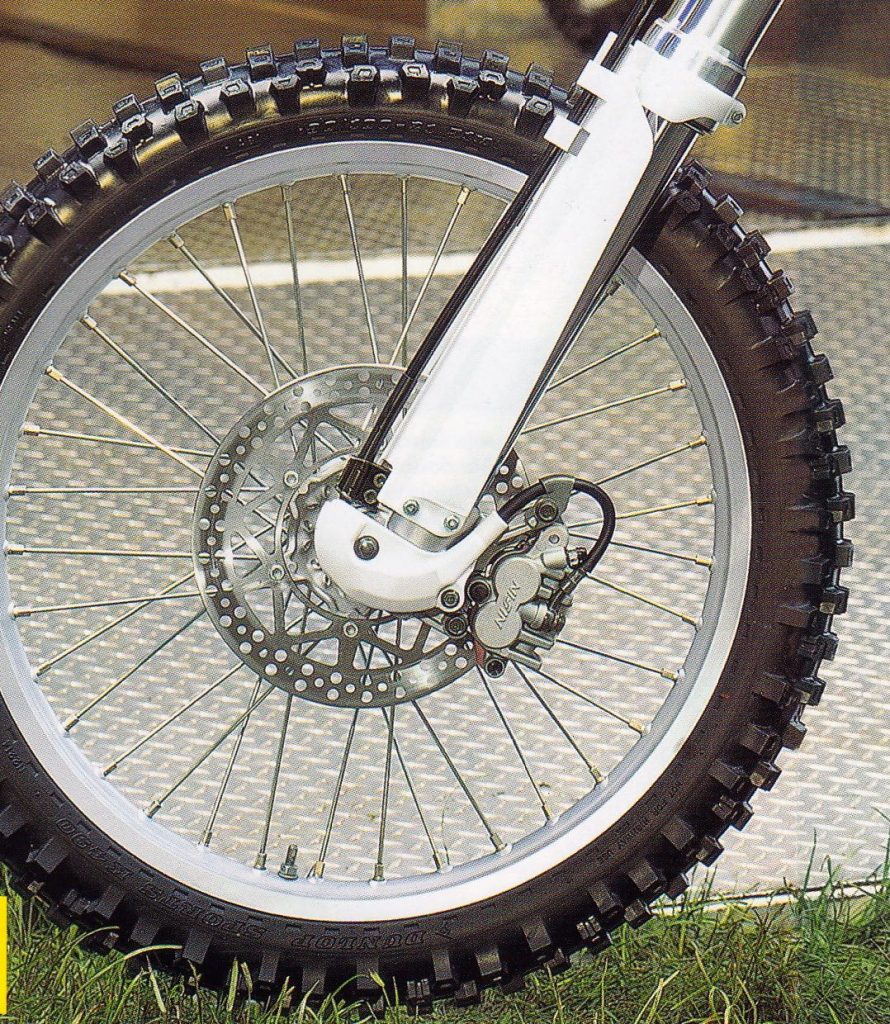 The YZ’s brakes worked very well, offering excellent power and control. Photo Credit: Yamaha
The YZ’s brakes worked very well, offering excellent power and control. Photo Credit: Yamaha
On the detailing front, the YZ was a mostly well-thought-out machine. The blue plastic looked great when new but proved much less abuse-friendly than the old white color scheme had been. Scuffs and scratches were readily visible and any time the plastic was bent it showed ugly white creases. The stock graphics were also of abysmal quality with most of the stickers giving up the ghost by the third ride. The ergonomics were excellent for most average-sized pilots with a compact feel and slim layout. The seat was a bit thin at the rear but overall, it was much more comfortable than the hard Honda and KTM saddles. Taller riders benefited from taller foam but unfortunately, the stock clamps did not feature reversible bar mounts, so an aftermarket clamp was necessary if you needed a bit more room in the pilot’s compartment. The stock radiator shrouds also continued to be an aggravation for knee brace wearers with its tendency to hook and bend out the rearmost corner. The new larger oil fill hole was a blessing to mechanics as was the reusable O-ring employed on the updated clutch cover. The clutch itself worked decently but clutch abusers quickly found that it was less robust than some of the YZ’s rivals. If pushed, the lever went away quickly, and most habitual clutch hammerers benefited from an aftermarket upgrade. Aside from the clutch, however, the new motor proved utterly bulletproof with excellent performance and trouble-free operation. The steel bars were not particularly robust, but this was par for the course in 1999. At the time, only KTM offered premium-quality alloy bars as stock equipment. The new Takasago Excel rims were incredibly strong, and the same high-quality components were used by the factory teams. The new rear hub also featured a Honda-style bolt pattern, so any spare CR sprockets bolted right up. The YZ brakes worked very well, but its complicated Akebono front master cylinder made lever adjustments a bit of a pain.
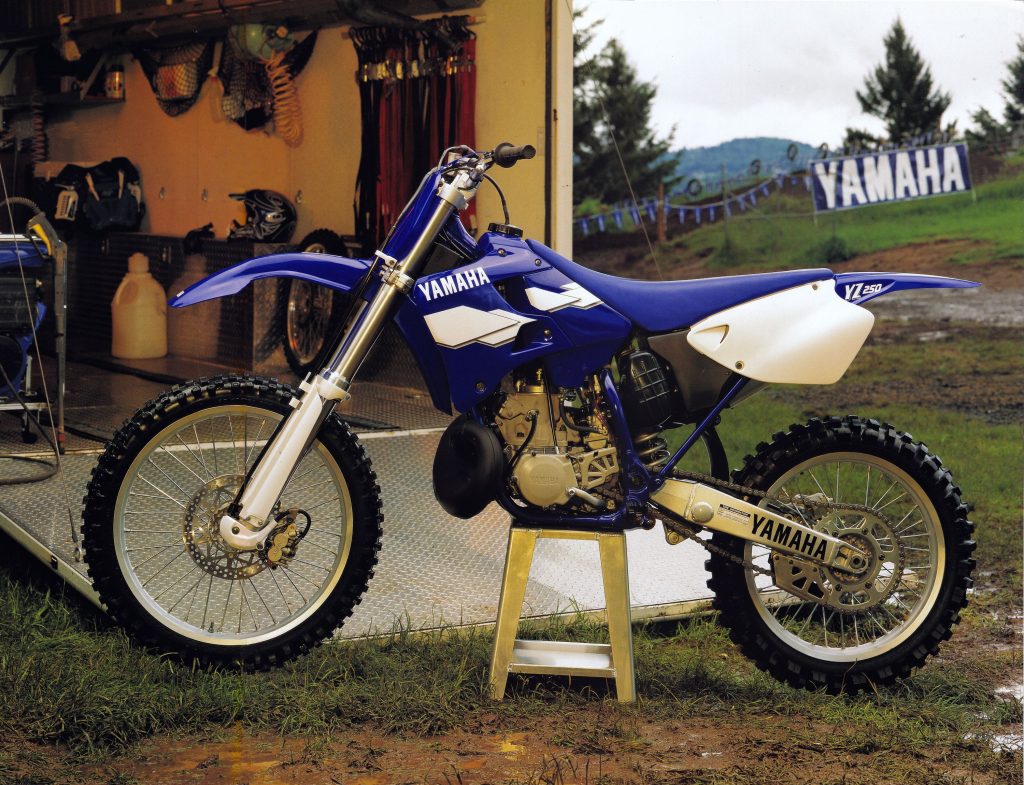 In 1999, Yamaha introduced the machine that would dominate 250 racing into the new Millennium. Twenty-five years later, the basic DNA of the ’99 YZ250 can still be seen in Yamaha’s surprisingly competitive two-stroke machine. Photo Credit: Yamaha
In 1999, Yamaha introduced the machine that would dominate 250 racing into the new Millennium. Twenty-five years later, the basic DNA of the ’99 YZ250 can still be seen in Yamaha’s surprisingly competitive two-stroke machine. Photo Credit: Yamaha
Overall, the 1999 Yamaha YZ250 proved to be a solid improvement in performance and one of the best 250s of 1999. Its new motor was broad, flexible, and fast, while its chassis provided the handling to put it at the front. Its suspension required a bit of fine-tuning, but once you dialed it in you had a bike capable of winning on any track and at any level. Today, the YZ250 lives on with the same basic engine that debuted in 1999 and it remains competitive against far newer and more technologically advanced rivals. In 1999, Yamaha introduced the machine that would dominate the 250 class for most of the 2000s. Its combination of handling prowess and motor performance was nearly unbeatable until the four-strokes took the spotlight away from the oil burners for good. One of the last great two-stroke designs, the 1999 YZ250 is a machine that has stood the test of time.


